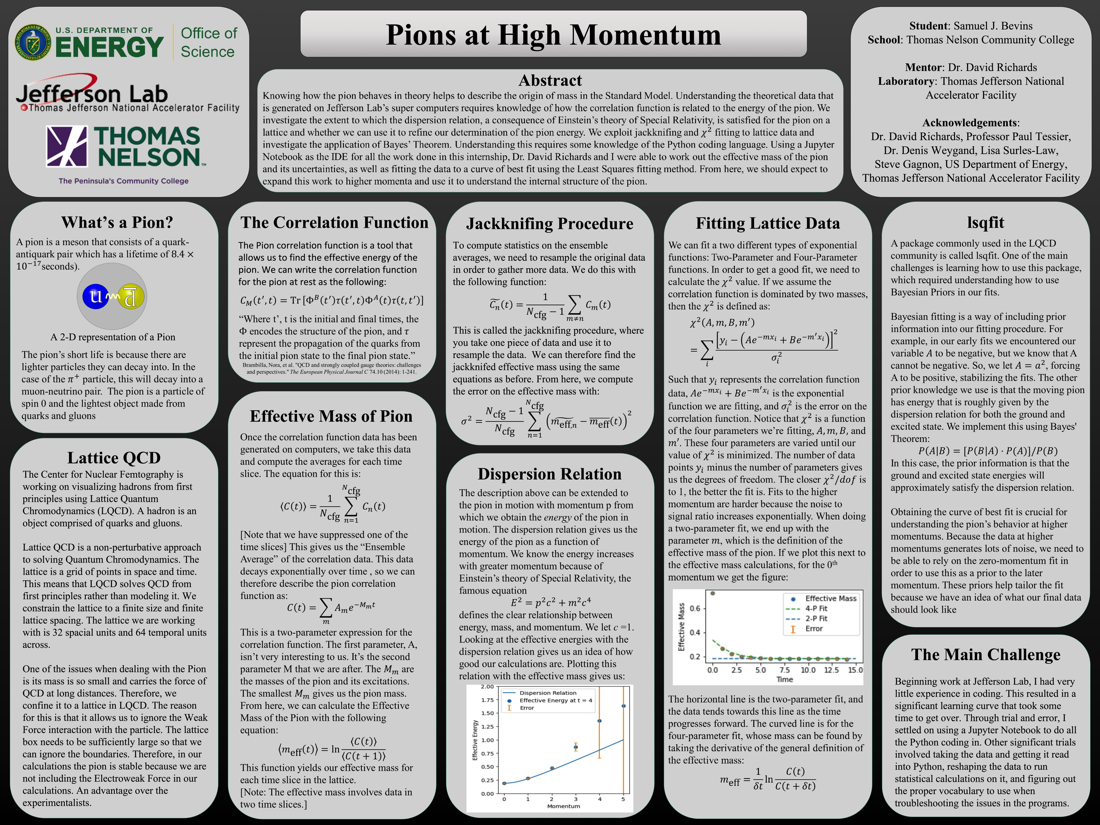Undergraduate Research at Jefferson Lab
Pions at High Momentum
Student: Samuel J. Bevins
School: Thomas Nelson Community College
Mentored By: Dr. David Richards
Knowing how the pion behaves in theory helps to describe the origin of mass in the Standard Model. Understanding the theoretical data that is generated on Jefferson Lab's super computers requires knowledge of how the correlation function is related to the energy of the pion. We investigate the extent to which the dispersion relation, a consequence of Einstein's theory of Special Relativity, is satisfied for the pion on a lattice and whether we can use it to refine our determination of the pion energy. We exploit jackknifing and χ2 fitting to lattice data ad investigate the application of Bayes' Theorem. Understanding this requires some knowledge of the Python coding language. Using a Jupyter Notebook as the IDE for all the work done in this internship, Dr. David Richards and I were able to work out the effective mass of the pion and its uncertainties, as well as fitting the data to a curve of best fit using the Least Squares fitting method. From here, we should expect to expand this work to higher momenta and use it to understand the internal structure of the pion.

Citation and linking information
For questions about this page, please contact Education Web Administrator.
